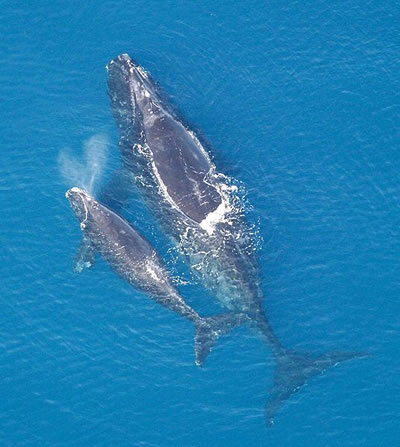Baleen Whales

Facts about creatures
- Home
- Animal Classification
- Animal Habitats
- Amphibians
- Arthropods
- Bats
- Birds
- Carnivorans
- Cetaceans
- Chordates
- Crustaceans
- Dinosaurs
- Diprotodonts
- Elephants
- Fish
- Golden Mole
- Insects
- Lagomorphs
- Mammals
- Mammal Teeth
- Marsupial Mole
- Metamorphosis
- Mollusks
- Primates
- Reptiles
- Rodents
- Ruminants
- Soricomorphans
- Tenrec
- Tetrapods
- Vertebrates
Baleen Whales
Baleen whales are cetaceans that belong to the suborder Mysticeti. They can be found in oceans all over the world.
Unlike other cetaceans – toothed whales, dolphins and porpoises – baleen whales do not have teeth.
Instead of teeth, baleen whales have baleen plates, comb-like structures that are made of baleen, a thick flexible substance that contains keratin, a protein that is found in human nails and hair. Baleen is also known as whalebone. A baleen whale has hundreds of baleen plates growing down from the roof of its mouth.

Baleen whales eat by filtering food in the water through their baleen plates. A baleen whale’s diet may consist of plankton, small crustaceans such as krill, or schools of small fish.
Although baleen whales eat very small organisms, they consume very large quantities. Large baleen whales can eat tons of food every day.
Baleen whales have teeth when they are embryos but lose them before they are born.
There are four kinds of baleen whales alive today: rorquals (family Balaenopteridae), right whales (family Balaenidae), the pygmy right whale (Caperea marginata) and the gray whale (Eschrichtius robustus).The blue whale (Balaenoptera musculus), which is the largest animal in the world, the humpback whale (Megaptera novaeangliae) and the fin whale (Balaenoptera physalus) are rorquals.
Baleen whales are usually black or gray. Their backs may be darker than their bellies. The blue whale gets its name from its blue-gray coloring.
Many baleen whales have a few hairs on their chin, jaws, and snout.
Rorquals and the pygmy right whales have a dorsal fin (a fin on the whale’s back). Right whales and gray whales do not have a dorsal fin. Instead of a dorsal fin, a gray whale has a dorsal bump with 6 to 13 smaller bumps behind it along its dorsal ridge, a raised line along its back.
A baleen whale has two blowholes. In comparison, a toothed whale has only one blowhole.
Baleen whales tend to be solitary or to travel in very small groups.
They may come together in larger numbers when feeding, migrating or breeding.
Baleen whales are usually larger than toothed whales.
Baleen Whale Migration
Many baleen whales migrate. In the summer, they feed in polar regions. They breed in tropical or sub-tropical regions in the winter.
The gray whale has the longest known migration route of any mammal. It migrates from the Bering and Chukchi seas in the Arctic to the Gulf of California and the Gulf of Mexico, a journey of about 5,000 miles to 7,000 miles each way. Gray whales migrate close to the coast. People often go on whale watching cruises in an attempt to catch glimpses of gray whales as they pass along the Pacific coasts of Canada, the United States and Mexico.
Baleen Whale Sounds and Songs
Baleen whales produce low frequency sounds that can travel for hundreds of miles over the ocean. These sounds may be used for long-distance communication. Unlike toothed whales, baleen whales do not produce sounds for echolocation.
The humpback whale and the bowhead whale, (Balaena mysticetus), which is also known as the Greenland right whale, produce repeated sound units that are considered to be songs. Males usually sing during mating season.